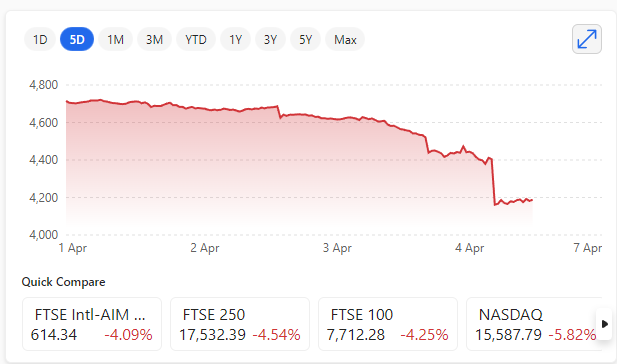April 07, 2025
Stock market turbulence in the CX world

Unless you’re living on a penguin-only island, the issue of tariffs and the current stock market upheaval is likely top of all your CX news feeds.
For companies (and traders) watching their values plummet, the immediate impact is double-edged. It is a nightmare for those who rely on stock for sourcing cash and making deals. While firms and traders holding large stock positions based on short-term trading strategies around countries capitulating to Trump’s tariff strategy are having a bad day.
But, at some point, after the pain when the tariffs have balanced, and investors find the bottom of the markets, it will be a great time to buy. Expect plenty of share buybacks, stock-based acquisitions, and a chance for businesses to consider how much their customers really matter to them.
Market crashes vs CX companies
But today, with tech stocks down an average of 5% (10% in Asia), it doesn’t matter if you’re running or working for a company that offers an excellent customer experience.
You’re in the same boat as companies that deliver front-end or back-office CX services, offer productivity tools for millions of customers or a few, or whose customer service is currently swamped by worried investors, such as pensions, banks and trading platforms.
Fear drives the current sell-off, regardless of the strong fundamentals or potential of any one stock or a category like the usually bullish technology sector. And the overwhelming sentiment that America is deliberately altering the global business landscape to its potential benefit. That increasingly looks like the goal of the Trump administration, however unlikely its chance of success. Especially as the EU lines up retaliatory tech tariffs of its own.
Actions CX teams can take now
The primary concern for your customers will be service continuity and pricing increases.
Send out messaging that transparently explains why it is “business as usual” for operations, and if not, what impacts they can expect.
For pricing, announce likely rises promptly and explain the reasons (tariffs, supply chain delays and so on) behind them. Highlight your value proposition and any additional benefits you can offer short-term.
Internally, many businesses react to a downturn with sweeping cost savings. CX leaders should look for non-destructive operational areas that they can trim down. Then consider necessary but painful savings, all the way down to what the company needs to keep the lights on.
Technical experts can spend time finding additional value from any CX products or services they use, and identify ways to retain customers, grow business deals and how to address any potential upcoming product or market changes.
From an industry perspective, the “in this together” maxim often comes to the fore. Most partners, clients and customers will appreciate any difficulties, and try to make accommodations unless they are in a worse situation, when it rapidly becomes every business, client or customer for itself.


